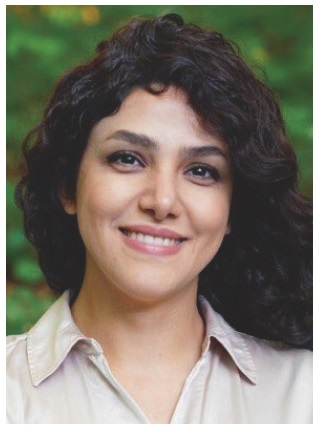Combining electrolytical nickel plating and cavity filling with silver for the preparation of steel samples with large and brittle scale layers
-
A. Gramlich
Alexander Gramlich heads the competence field of material characterisation at the Steel Institute of RWTH Aachen. His research group focusses on sustainability aspects of steel production and processing. 2022 he obtained his Dr.-Ing. with a thesis on the development of high strength air-hardening forging steels., S. Shayan
Sindohkt Shayan holds a master’s degree in materials engineering of RWTH Aachen University. 2022 she is working as a research assistant at the Steel Institute of RWTH Aachen University, focusing on the characterization of high-temperature material degradation, including corrosion and mechanical behavior.
Abstract
A new metallographic preparation method for steel samples with large and brittle scale layer is presented. A combination of electrolytical nickel plating, mechanical grinding and polishing as well as conductive silver paste penetration is proposed to protect the samples from corrosion caused by residual water from the preparation as well as to reduce the height difference between base metal scale layer and regions of broken scale. Both measures drastically increase the conductivity of the sample, as local charging on corrosion products as well as on protruding scale parts is prevented. It is demonstrated that the new method enables high quality imaging (secondary electron, back scatter diffraction as well as energy dispersive spectroscopy imaging) without the need for focused ion beam sample preparation, which drastically reduced the necessary time for sample preparation.
Kurzfassung
Vorgestellt wird ein neues Verfahren zur metallographischen Präparation von Stahlproben mit großer und spröder Zunderschicht. Vorgeschlagen wird eine Kombination aus elektrolytischer Vernickelung, mechanischem Schleifen und Polieren sowie dem Auftragen einer leitfähigen Silberpaste, um die Proben vor Korrosion durch Restwasser der Präparation zu schützen und den Höhenunterschied zwischen der Zunderschicht des Grundwerkstoffs und Bereichen mit aufgebrochenem Zunder zu verringern. Beide Maßnahmen erhöhen die Leitfähigkeit der Probe drastisch, da so lokale Aufladungen an Korrosionsprodukten sowie an hervorstehenden Zunderteilen verhindert werden. Es wird gezeigt, dass das neue Verfahren eine Bildgebung ermöglicht, die eine hohe Bildqualität liefert (Bildgebung mittels Sekundärelektronen, Elektronenrückstreubeugung sowie energiedispersiver Spektroskopie), ohne Proben mittels fokussiertem Ionenstrahl präparieren zu müssen, sodass die für die Probenpräparation erforderliche Zeit drastisch reduziert wird.
About the authors

Alexander Gramlich heads the competence field of material characterisation at the Steel Institute of RWTH Aachen. His research group focusses on sustainability aspects of steel production and processing. 2022 he obtained his Dr.-Ing. with a thesis on the development of high strength air-hardening forging steels.

Sindohkt Shayan holds a master’s degree in materials engineering of RWTH Aachen University. 2022 she is working as a research assistant at the Steel Institute of RWTH Aachen University, focusing on the characterization of high-temperature material degradation, including corrosion and mechanical behavior.
References / Literatur
[1] Raabe, D.; Jovicevic-Klug, M.; Ponge, D.; Gramlich, A.; Kwiatkowski da Silva, A.; Grundy, Nicholas, A.; Springer, H.; Souza Filho, I.; Ma, Y.: Circular Steel for Fast Decarbonization: Thermodynamics, Kinetics, and Microstructure Behind Upcycling Scrap into High-Performance Sheet Steel. Annual Review of Materials Research 54 (2024). DOI:10.1146/annurev-matsci-080222-12364810.1146/annurev-matsci-080222-123648Suche in Google Scholar
[2] Nowell, M. M.; Witt, R. A.; True, B. W.: EBSD Sample Preparation: Techniques, Tips, and Tricks. Microscopy Today 13 (2005) 4, pp. 44–49. DOI:10.1017/S155192950005366910.1017/S1551929500053669Suche in Google Scholar
[3] Jahns, K.; Krupp, U.; Sundell, G.; Geers, C.: Formation of corrosion pockets in FeNiCrAl at high temperatures investigated by 3D FIB-SEM tomography. Materials and Corrosion 71 (2020) 11. DOI:10.1002/maco.20191138610.1002/maco.201911386Suche in Google Scholar
[4] Kim, B.-K.; Szpunar, J. A.: Orientation imaging microscopy for the study on high temperature oxidation. Scripta Materialia 44 (2001) 11, pp. 2605– 2610. DOI:10.1016/S1359-6462(01)00942-310.1016/S1359-6462(01)00942-3Suche in Google Scholar
© 2025 Walter de Gruyter GmbH, Berlin/Boston, Germany
Artikel in diesem Heft
- Inhalt
- Editorial
- Editorial
- Microstructural alterations in WC-Co work tools by metallurgical preparation methods
- Combining electrolytical nickel plating and cavity filling with silver for the preparation of steel samples with large and brittle scale layers
- Impact of process gases on scale formation when heating tool steels
- Failure Analysis
- Fractographic characterization of cracking in an aeroderivative gas turbine engine seal segment
- Picture of the Month
- Picture of the Month
- News
- News
- Meeting Diary
- Meeting Diary
Artikel in diesem Heft
- Inhalt
- Editorial
- Editorial
- Microstructural alterations in WC-Co work tools by metallurgical preparation methods
- Combining electrolytical nickel plating and cavity filling with silver for the preparation of steel samples with large and brittle scale layers
- Impact of process gases on scale formation when heating tool steels
- Failure Analysis
- Fractographic characterization of cracking in an aeroderivative gas turbine engine seal segment
- Picture of the Month
- Picture of the Month
- News
- News
- Meeting Diary
- Meeting Diary

